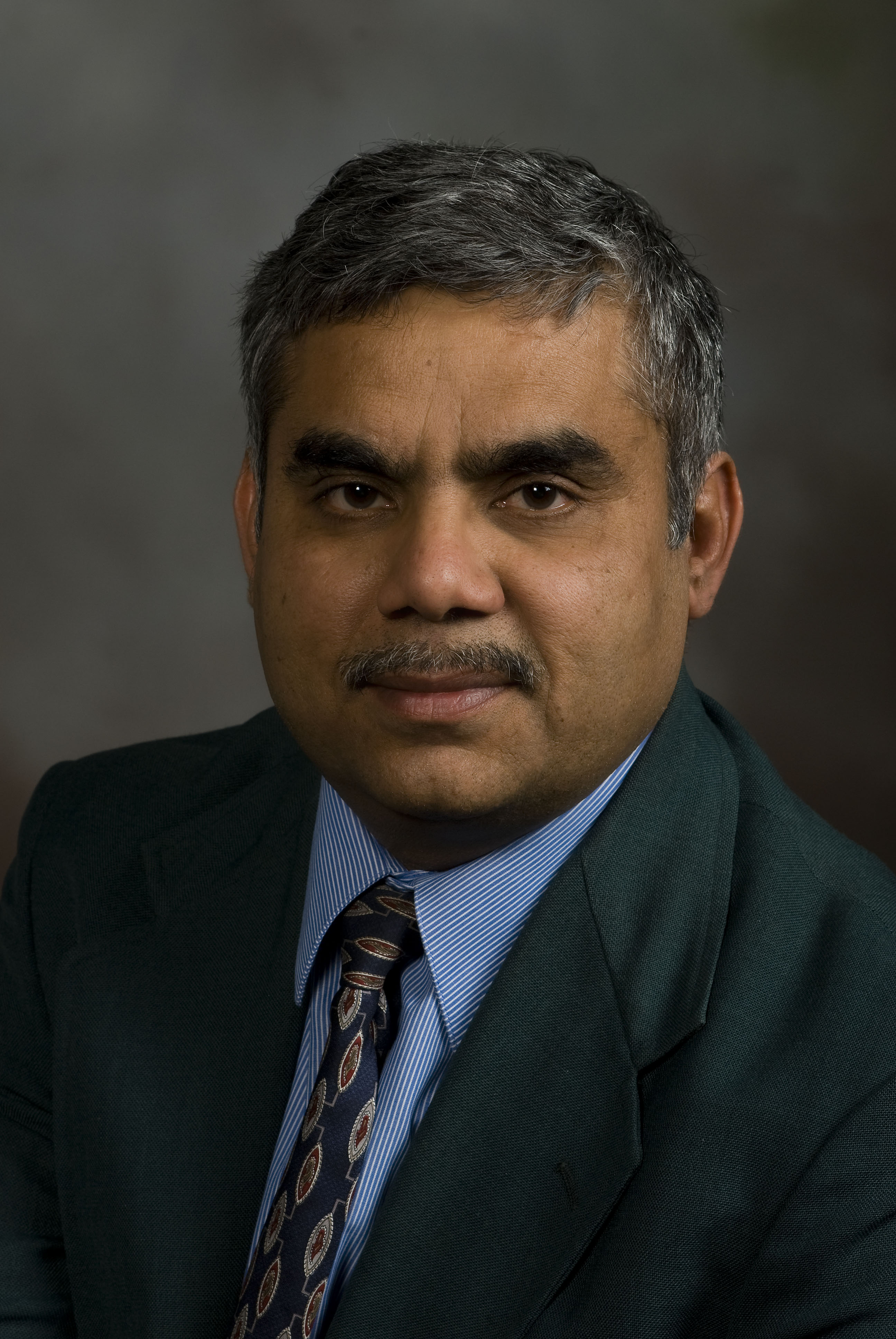Virginia Tech teams with Wright State, Air Force to design future aerospace vehicles

Virginia Tech, Wright State University (WSU), and the Air Force Research Laboratory at Wright Patterson Air Force Base (WPAFB), Ohio, specializing in the design of aerospace vehicles, are teaming to form a collaborative center for the development of future aerospace vehicles (FAVs). The new center will be based at Virginia Tech.
Virginia Tech’s Multidisciplinary Analysis and Design Center for Advanced Vehicles and WSU researchers involved in this new collaboration, along with the Air Force’s Multidisciplinary Technology Center (MDTC), will form the Collaborative Center on Multidisciplinary Sciences.
Rakesh K. Kapania, the Mitchell Professor of Aerospace and Ocean Engineering at Virginia Tech and director of Multidisciplinary Analysis and Design, will oversee the Multidisciplinary Analysis and Design Center for Advanced Vehicles. Ramana Grandhi, a University Distinguished Professor at Wright State University, is also a member of the leadership team. Ray Kolonay will be the project engineer for the Air Force.
"We are very excited to be working with the Multidisciplinary Analysis and Design Center for Advanced Vehicles in Virginia Tech's College of Engineering. Its faculty members have extensive expertise in the area of multidisciplinary analysis and optimization and have a long history of making significant contributions to advancing this field. We look forward to combining the multidisciplinary analysis and optimization expertise of Virginia Tech and that of the Air Force Research Laboratory (AFRL) and their collaborators to make a significant contribution to the development of high fidelity design methodologies that will enable future Air Force aerospace vehicles," Kolonay said.
Initial funding from the Air Force will be about $2.25 million for five years.
For the past two decades, the AFRL at Wright-Patterson Air Force Base and the Multidisciplinary Analysis and Design Center have developed in parallel their own capabilities as they worked on futuristic revolutionary aircraft. For example, both centers pioneered the use of design models using high-performance computing, surrogate models to represent complex physics, and software tools.
By consolidating the efforts, the goal is to improve aerospace vehicle design methods. The collaborative center will specifically investigate multidisciplinary analysis and design of several futuristic aircraft such as the joined-wing SensorCraft, flapping micro-air vehicles, and supersonic long-range strike aircraft.
SensorCraft is a conceptual aircraft that the Air Force hopes to use for long-endurance observation using futuristic sensor devices. Potentially, the joined-wing design could lead to better radar capabilities, a reduction in weight, and better performance.
The flapping micro-air vehicle (MAV) is a remotely controlled aircraft that might be analogous in size to a large insect or a small bird. Flapping wings, similar to a bird’s motion, appear to offer the greatest potential for versatility.
The supersonic long-range strike aircraft would be an extension of current technology, but with a more rapid global strike and responsive space lift. Conceivably, the new system could provide routine access to space within the first quarter of this century.
Also participating in the new center from Virginia Tech will be Layne T. Watson of computer science, Muhammad Hajj of engineering science and mechanics, and William Mason, Robert Canfield, Craig Woolsey and Mayuresh Patil, all of aerospace and ocean engineering at Virginia Tech.
The center’s performance will be evaluated by an executive board consisting of top scientists from government laboratories, industry, and academia and headed by Don Paul of the WPAFB. Paul is the Chief Scientist for the AFRL’s Air Vehicles Directorate and the Air Force's principle scientific advisor in the conduct of research and development on all aspects of flight vehicle technology, including aeromechanics, structures, controls, and integration.
Joseph A. Schetz, who holds Virginia Tech’s Durham Chair in Engineering, will be Virginia Tech’s lead member on the executive board. "We are delighted to have the opportunity to work closely with AFRL and WSU to help design new and innovative aircraft for the U.S. Air Force. This provides a wonderful opportunity for our faculty and graduate students," Schetz said.
Collaborative Center on Multidisciplinary Sciences’ director Kapania has established a world-class research program at Virginia Tech in the general areas of mechanics of aerospace structures with emphasis on computational structural mechanics, fluid-structures interaction, multidisciplinary analysis and design optimization, deterministic and probabilistic mechanics, nonlinear analysis of composite structures, neural networks, structural health monitoring, and adaptive structures.
Last year, NASA awarded a three-year $3 million research program to him to design unitized aerospace structures in collaboration with Lockheed Martin. According to Kapania, these two rather large projects have placed the Multidisciplinary Analysis and Design Center at the forefront of both civilian and military aerospace vehicle design nationally and internationally.
During his career at Virginia Tech, Kapania has served an appointment as a Boeing-Welliver Fellow, received the College of Engineering Dean’s Award for Excellence in Research, and has served twice as associate editor of the Journal of the American Institute of Aeronautics and Astronautics. In addition, he has advised more than 60 graduate students and authored or co-authored more than 100 peer-reviewed journal papers.
Virginia Tech's Institute for Critical Technology and Applied Science (ICTAS), the Office of Vice-President for Research, the College of Engineering, and the aerospace and ocean engineering department partnered with the Dayton Area Graduate Study Institute to provide institutional support for the collaborative center. The new center will support 11.5 graduate students between the two universities and will be part of the ICTAS Emerging Research thrust area.




